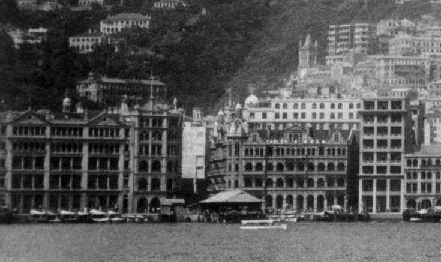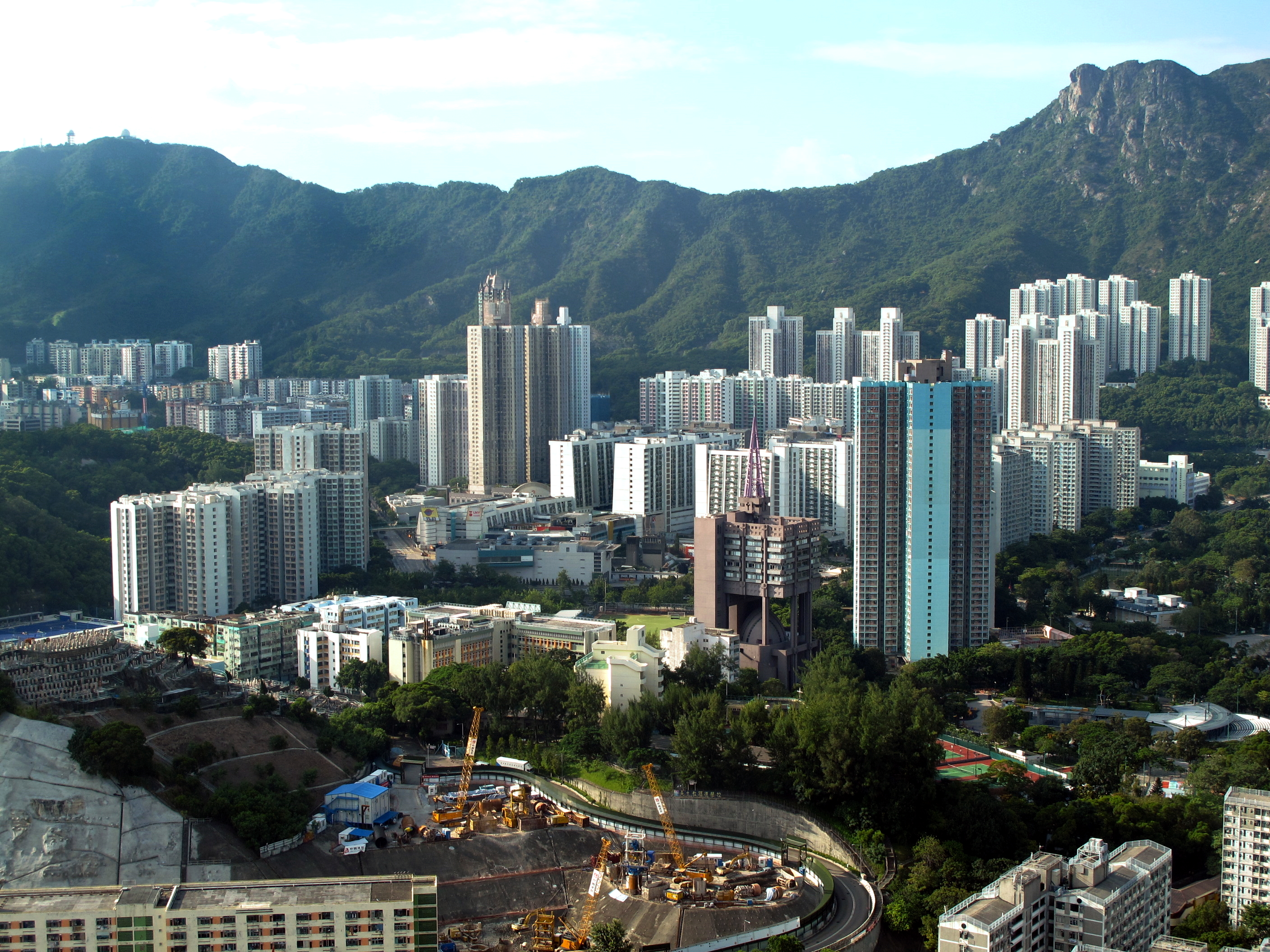|
Blake Pier, Central
The Blake Pier was a ferry pier in Central, Hong Kong. It was named after Sir Henry Arthur Blake, the twelfth governor of Hong Kong. History First generation The first generation of the pier was built in 1900 the end of Pedder Street for serving dignitaries and colonial governors. It had no cover originally. But, in 1909, an Edwardian-style, structural steel pavilion was built on top, providing travellers with shelter. It was demolished in 1965, but the pavilion was preserved, dismantled and rebuilt in Morse Park in Wong Tai Sin, Kowloon as a park shelter. In 2006, the pavilion was again dismantled, restored to its original condition. The renovated structure was relocated to Stanley, where it stands next to Murray House, which was similarly relocated brick by brick. Second generation The second generation of the pier was built in 1960s. It was demolished in 1993 to cope with the Central Reclamation Phase 1 project. Blake Pier at Stanley The top structure of the Firs ... [...More Info...] [...Related Items...] OR: [Wikipedia] [Google] [Baidu] |
Blake Pier At Stanley
Blake Pier at Stanley (Chinese language, Chinese: 赤柱卜公碼頭) is a public pier in Stanley, Hong Kong, Stanley, Hong Kong. The name originally referred to Blake Pier, Central, a ferry pier in Central, Hong Kong. The pier was named after Sir Henry Arthur Blake, the twelfth governor of Hong Kong. It was originally located at the site of the Central and Wan Chai Reclamation, Central Reclamation Phase 1 project. The top structure of the pier was later transferred to the open-air oval theatre in Morse Park, in between Wong Tai Sin, Hong Kong, Wong Tai Sin and Lok Fu, Kowloon. In 2006, the structure was once again transferred next to the Murray House in Stanley, itself dismantled brick by brick and relocated from Central. The pier was recommissioned in Stanley on 31 July 2007. 3D scanner, 3D Laser Scanning Technology in digital recording of structures was applied to capture the 3D images of the roof structure. The pier has one kai-to route travelling between Aberdeen, Hong ... [...More Info...] [...Related Items...] OR: [Wikipedia] [Google] [Baidu] |
Murray House
Murray House is a Victorian-era building in Stanley, Hong Kong. Built in the present-day business district of Central in 1846 as officers' quarters of the Murray Barracks, the building was moved to the south of Hong Kong Island during the 2000s.This building has become an iconic landmark in Hong Kong. After housing the Hong Kong Maritime Museum, now in Stanley, it is now home to restaurants and shops. Architecture Murray House was one of the oldest surviving public buildings in Hong Kong. Similar to many of its contemporaries from the early colonial era, it was designed in Classical architecture style. The heavy stone walls (with flat arched opening) are on the ground floor to give a sense of stability, while the lighter Doric and Ionic columns are on the floors above to allow better ventilation. All floors have verandas on all sides in response to the local subtropical/monsoons climate. History Early history Murray House was built in 1846 as officers' quarters of the ... [...More Info...] [...Related Items...] OR: [Wikipedia] [Google] [Baidu] |
Demolished Piers In Hong Kong
Demolition (also known as razing, cartage, and wrecking) is the science and engineering in safely and efficiently tearing down of buildings and other artificial structures. Demolition contrasts with deconstruction, which involves taking a building apart while carefully preserving valuable elements for reuse purposes. For small buildings, such as houses, that are only two or three stories high, demolition is a rather simple process. The building is pulled down either manually or mechanically using large hydraulic equipment: elevated work platforms, cranes, excavators or bulldozers. Larger buildings may require the use of a wrecking ball, a heavy weight on a cable that is swung by a crane into the side of the buildings. Wrecking balls are especially effective against masonry, but are less easily controlled and often less efficient than other methods. Newer methods may use rotational hydraulic shears and silenced rock-breakers attached to excavators to cut or break thro ... [...More Info...] [...Related Items...] OR: [Wikipedia] [Google] [Baidu] |
Victoria Harbour
Victoria Harbour is a natural landform harbour in Hong Kong separating Hong Kong Island in the south from the Kowloon Peninsula to the north. The harbour's deep, sheltered waters and strategic location on South China Sea were instrumental in Hong Kong's establishment as a British colony in 1841 and its subsequent development as a trading centre. Throughout its history, the harbour has seen numerous reclamation projects undertaken on both shores, many of which have caused controversy in recent years. Environmental concerns have been expressed about the effects of these expansions, in terms of water quality and loss of natural habitat. It has also been proposed that benefits of land reclamation may be less than the effects of decreased harbour width, affecting the number of vessels passing through the harbour. Nonetheless Victoria Harbour still retains its founding role as a port for thousands of international vessels each year. The harbour is a major tourist attraction of ... [...More Info...] [...Related Items...] OR: [Wikipedia] [Google] [Baidu] |
Buildings And Structures Demolished In 1993
A building, or edifice, is an enclosed structure with a roof and walls standing more or less permanently in one place, such as a house or factory (although there's also portable buildings). Buildings come in a variety of sizes, shapes, and functions, and have been adapted throughout history for a wide number of factors, from building materials available, to weather conditions, land prices, ground conditions, specific uses, prestige, and aesthetic reasons. To better understand the term ''building'' compare the list of nonbuilding structures. Buildings serve several societal needs – primarily as shelter from weather, security, living space, privacy, to store belongings, and to comfortably live and work. A building as a shelter represents a physical division of the human habitat (a place of comfort and safety) and the ''outside'' (a place that at times may be harsh and harmful). Ever since the first cave paintings, buildings have also become objects or canvasses of much artistic ... [...More Info...] [...Related Items...] OR: [Wikipedia] [Google] [Baidu] |
Transport Infrastructure Completed In 1900
Transport (in British English), or transportation (in American English), is the intentional movement of humans, animals, and goods from one location to another. Modes of transport include air, land (rail and road), water, cable, pipeline, and space. The field can be divided into infrastructure, vehicles, and operations. Transport enables human trade, which is essential for the development of civilizations. Transport infrastructure consists of both fixed installations, including roads, railways, airways, waterways, canals, and pipelines, and terminals such as airports, railway stations, bus stations, warehouses, trucking terminals, refueling depots (including fueling docks and fuel stations), and seaports. Terminals may be used both for interchange of passengers and cargo and for maintenance. Means of transport are any of the different kinds of transport facilities used to carry people or cargo. They may include vehicles, riding animals, and pack animals. Vehicles may inclu ... [...More Info...] [...Related Items...] OR: [Wikipedia] [Google] [Baidu] |
List Of Demolished Piers In Hong Kong
The following is an incomplete list of demolished piers in Hong Kong Hong Kong ( (US) or (UK); , ), officially the Hong Kong Special Administrative Region of the People's Republic of China ( abbr. Hong Kong SAR or HKSAR), is a city and special administrative region of China on the eastern Pearl River Delt .... References {{Reflist Demolished piers in Hong Kong Piers, demolished ... [...More Info...] [...Related Items...] OR: [Wikipedia] [Google] [Baidu] |
Kowloon
Kowloon () is an urban area in Hong Kong comprising the Kowloon Peninsula and New Kowloon. With a population of 2,019,533 and a population density of in 2006, it is the most populous area in Hong Kong, compared with Hong Kong Island and the rest of the New Territories. The peninsula's area is about . Location Kowloon is located directly north of Hong Kong Island across Victoria Harbour. It is bordered by the Lei Yue Mun strait to the east, Mei Foo Sun Chuen, Butterfly Valley and Stonecutter's Island to the west, a mountain range, including Tate's Cairn and Lion Rock to the north, and Victoria Harbour to the south. Also, there are many islands scattered around Kowloon, like CAF island. Administration Kowloon comprises the following districts: *Kowloon City * Kwun Tong *Sham Shui Po *Wong Tai Sin * Yau Tsim Mong Name The name 'Kowloon' () alludes to eight mountains and a Chinese emperor: Kowloon Peak, Tung Shan, Tate's Cairn, Temple Hill, Unicorn Ridge, Lion Rock, Be ... [...More Info...] [...Related Items...] OR: [Wikipedia] [Google] [Baidu] |
Lok Fu
Lok Fu () is a place in Wong Tai Sin District, Kowloon, Hong Kong. It is located to the east of Kowloon Tsai, the west of Wong Tai Sin and the north of Kowloon City. History The only village in this area in the 19th century was Ta Ku Ling or Ta Kwu Ling (), not to be confused with the other two villages of the same name in Hong Kong (Ta Ku Ling in Sai Kung district and Ta Kwu Ling in North district). It is recorded on an 1866 map and was part of an alliance of seven nearby villages led by Nga Tsin Wai Tsuen. It was located where Morse Park is now. In the 1940s many refugees arrived in the area, which was then known as Lo Fu Ngam (, literally "Tiger's Den" in Chinese). There were many squatter huts on the hillsides. After the construction of the public housing estate started in 1957 with the first resettlement blocks being built, Lo Fu Ngam was renamed as Lok Fu which literally means "Happiness and Wealth" in Chinese. All the housing estates were rebuilt in the 1980s and 19 ... [...More Info...] [...Related Items...] OR: [Wikipedia] [Google] [Baidu] |
Central And Wan Chai Reclamation
Central and Wan Chai Reclamation is a project launched by the government of Hong Kong since the 1990s to reclaim land for different purposes. This includes transportation improvements such as the Hong Kong MTR station, Airport Express Railway & Central-Wan Chai Bypass, as well as public recreation space such as the Central Harbourfront Event Space, Tamar Park and the Hong Kong Observation Wheel. Background The project was first mentioned in the 1985 planning strategy by the Government. The Government then completed a feasibility study in 1989, followed by endorsement of the then Land Development Policy Committee on the project. Objectives The proposed reclamation extends along the waterfront from Sheung Wan to Causeway Bay. The ostensible objectives of the project, among other things, include: *to supply land for the Hong Kong station and the extended overrun tunnel of the Airport Express; *to provide land for Central–Wan Chai Bypass and Island Eastern Corridor Link to re ... [...More Info...] [...Related Items...] OR: [Wikipedia] [Google] [Baidu] |









